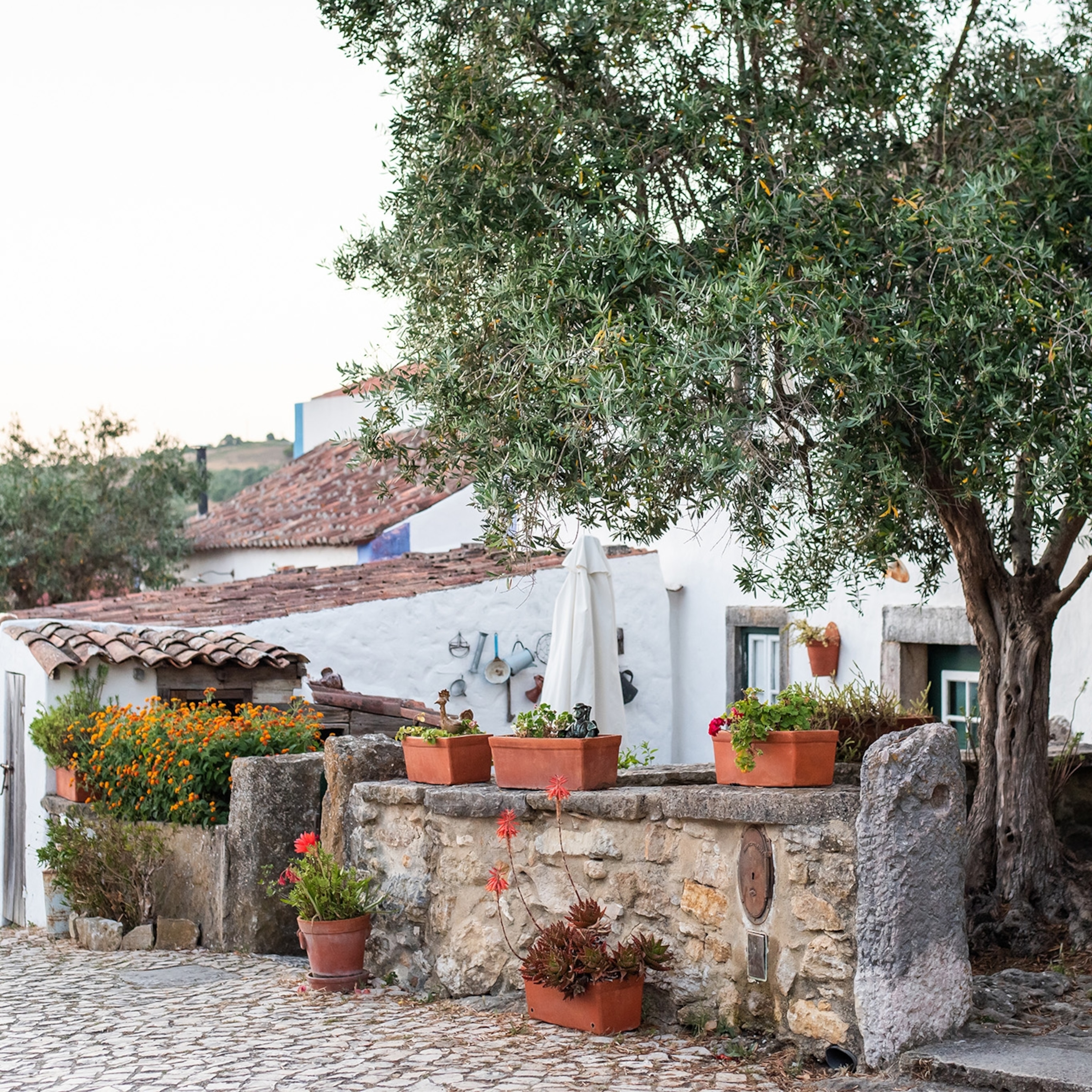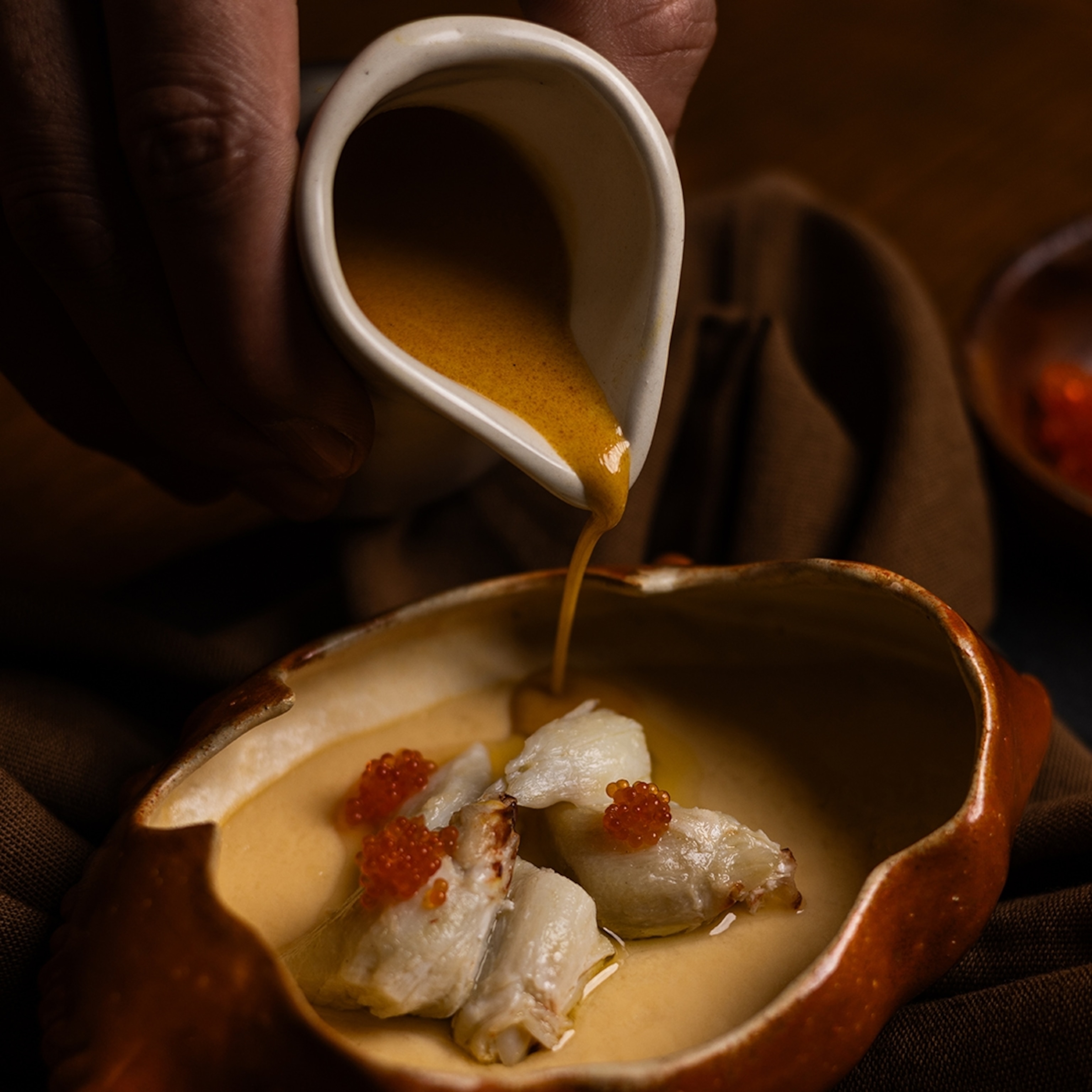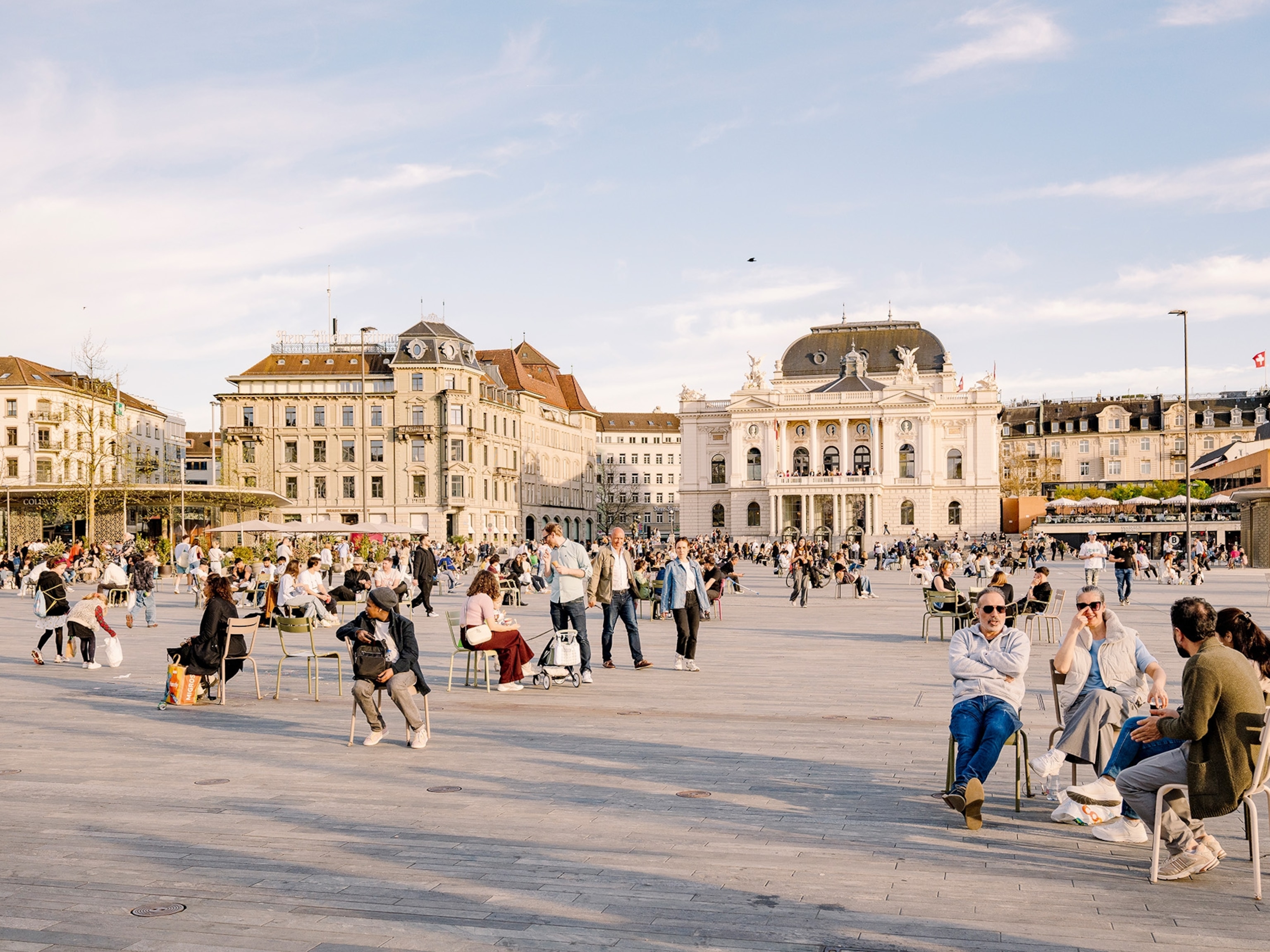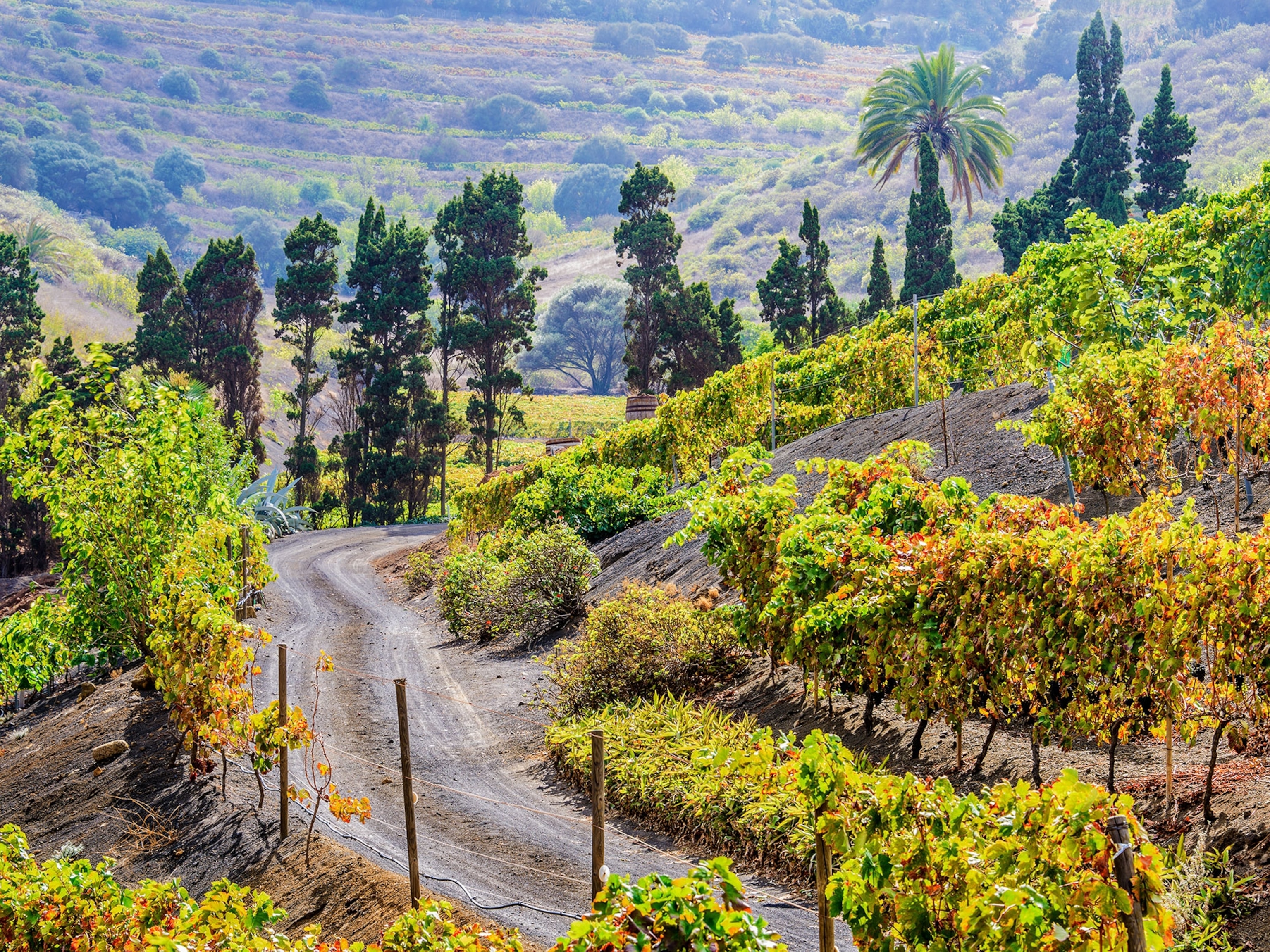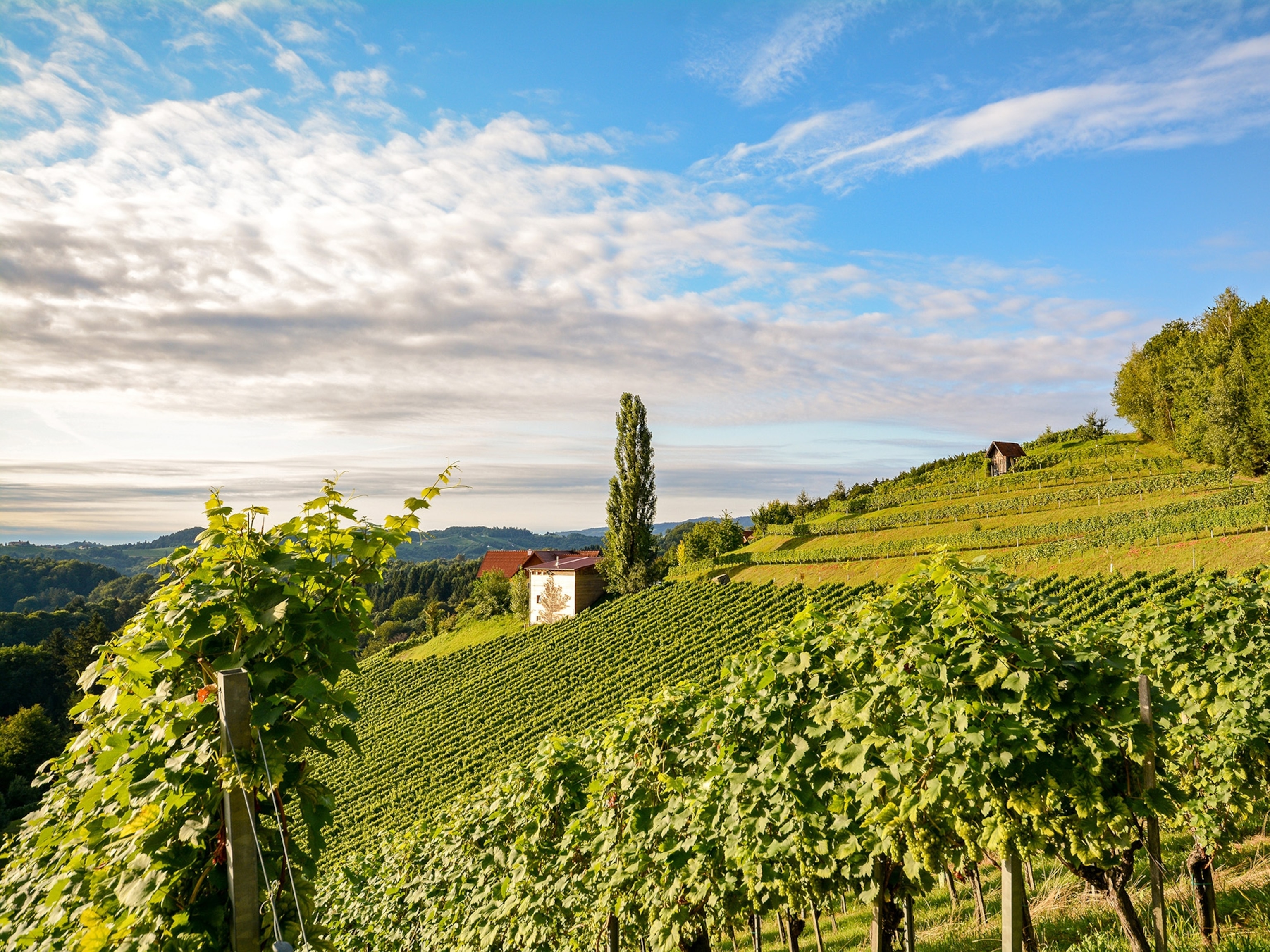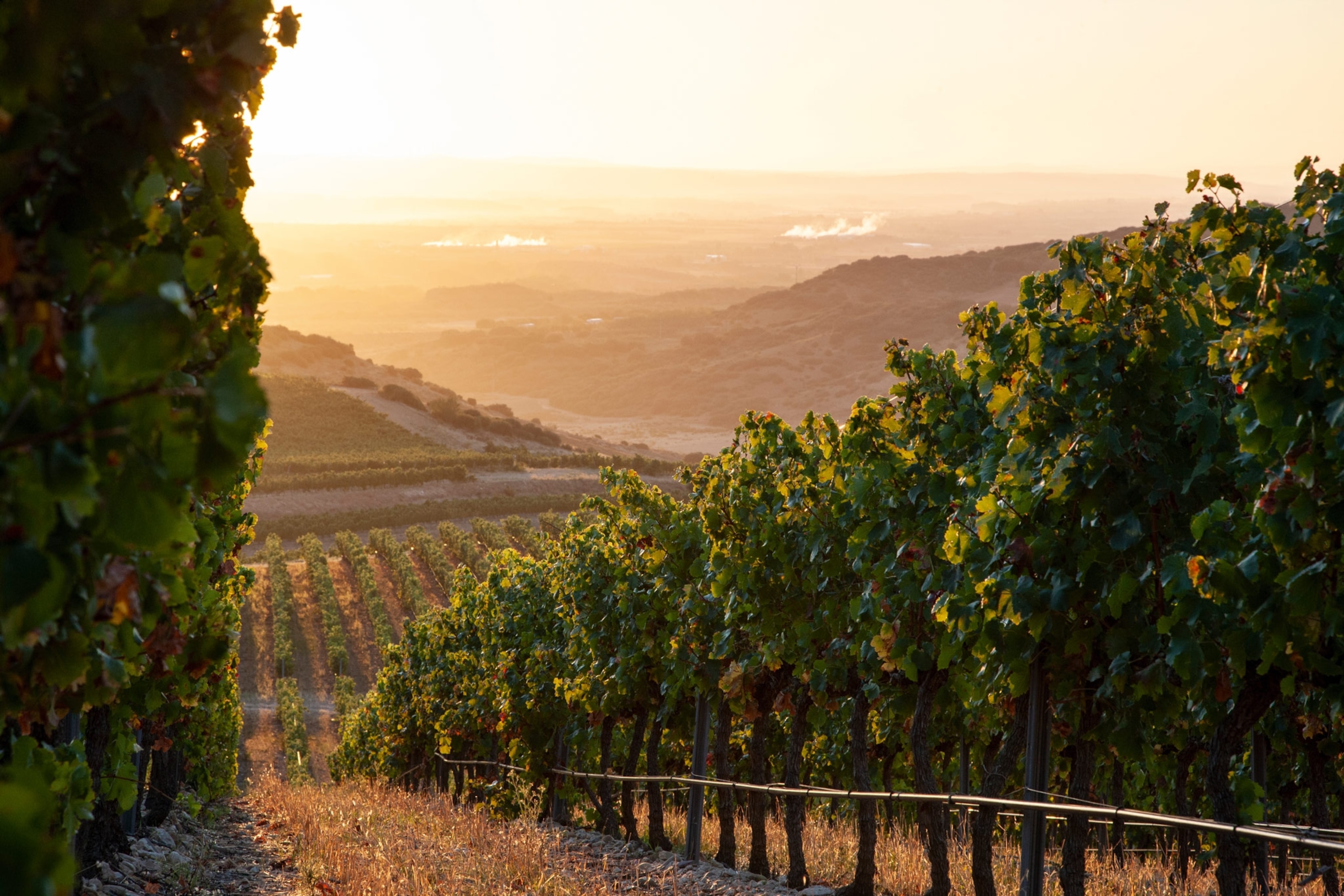
A taste of Rioja, from crispy croquetas to piquillo peppers
With its sprawling vineyards and countless pintxos bars, this region of northern Spain is ripe for culinary adventures.
The cooking class: Atelier Hermanas Loro
“You need to eat croquetas with your hands,” says Isabella. “That way you feel the textures and the contrasts both in your hand and in your mouth. You just don’t get that same crunch if you use cutlery.”
Compliant, I bite into a croqueta made with cecina de León (a local cured beef) and parmesan. Its granular, breadcrumbed shell explodes under the pressure, releasing a bechemel sauce that’s rich and full of flavour. I’d made this filling earlier under close instruction, stirring the onions as they sweated down in a puddle of local olive oil and watching as they acquired a soft, glistening texture — it’s satisfying to now detect that sweetness in the sauce.
Mónica, Isabella and Marie José, better known as the Hermanas Loro (Loro sisters), have been running their cooking school in Logroño, the capital of the Rioja province, for 14 years. They’re a restless trio. As well as the school, they run two restaurants (El Arriero, in the nearby village of Sorzana, where they’re from, and Divina Croqueta, in Logroño, which focuses solely on the dish it takes its name from), as well as a catering company and a delivery service. “It’s in our genes,” explains Marie José. “Our father was very hardworking.”
I’ve joined them to learn how to cook traditional Rioja tapas, as well as some more modern creations. My visit coincides with red pepper-roasting season (from September to December, you’ll find strings of red piquillo peppers strung over glowing embers in the streets of the local villages, the air sweetly scented as they roast) and tonight, we’re using these peppers in a classic pinxtos dish, combining them with tuna, caramelised onion and toast. It’s not long before the aroma of the peppers triggers a wave of nostalgia in the room, the Loro sisters and my fellow classmates recalling memories of childhoods spent in the region.
There’s a lot on the menu this evening and the room is soon filled with the sound of mushrooms simmering and cod bubbling in milk. The classes here are extremely popular — the sisters run up to 13 a week, with guests coming from as far afield as Israel, Canada and Mexico. And, for all their drive and ambition, the Loro sisters clearly also love what they do, laughing and teasing each other as they work. Next, they teach us how to make their grandmother’s buñuelos (like churros in texture, but round and made with butternut squash). Mónica drops them into hot bubbling oil — here, we learn, it’s always olive oil. As if to emphasise the point, she whips out a five-litre container of the stuff, laughing as she explains that American guests sometimes ask her for photos with it.
When they’re fetched from their sizzling oil bath, the buñuelos are a squidgy delight, although firmer than expected once I get past the crunch of the sugar dusting. “You have to eat them now,” I’m told. “They won’t last.” I nod; I’ll make sure they don’t. As with the croquetas, I’m happy to follow the Loro sisters’ advice.
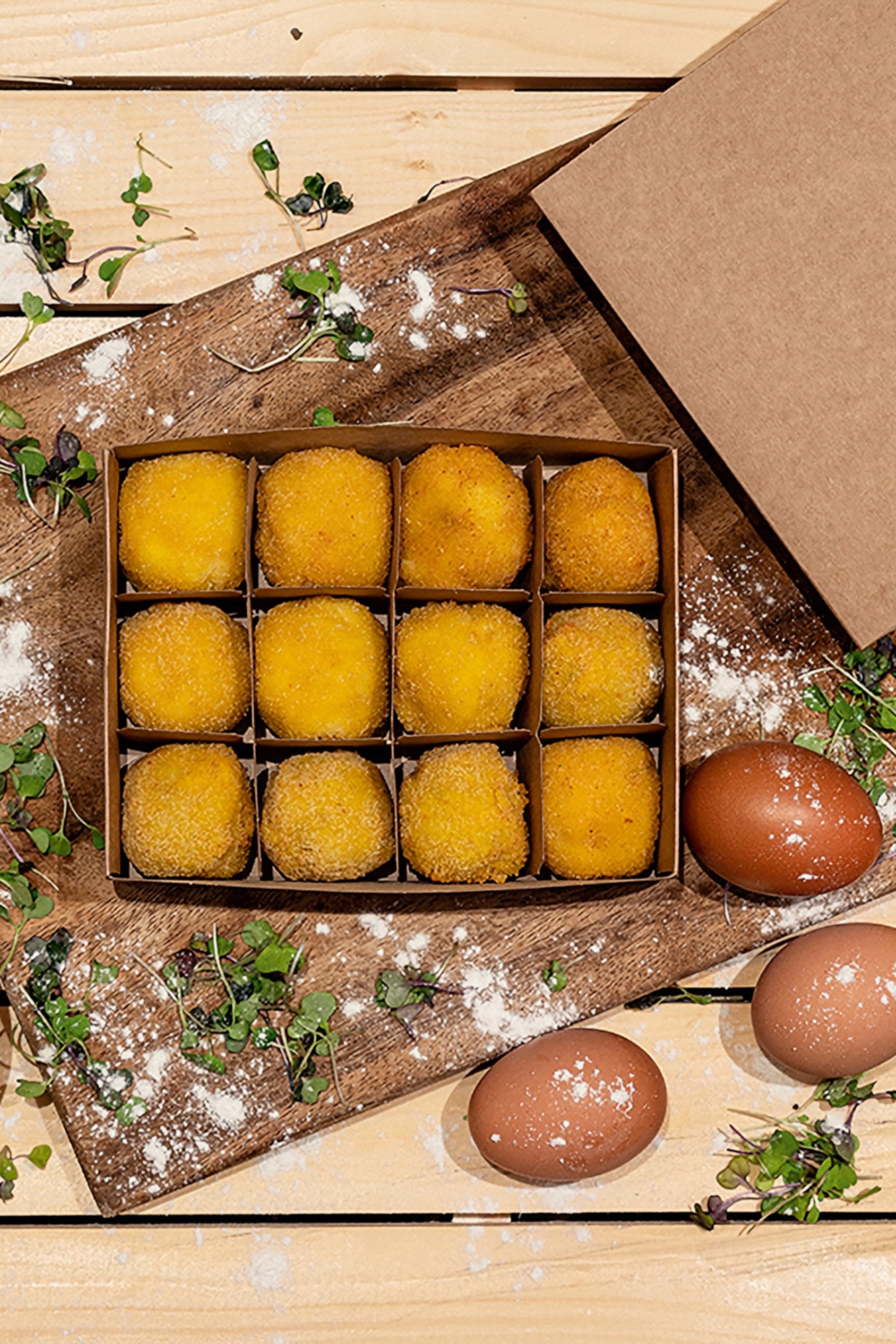
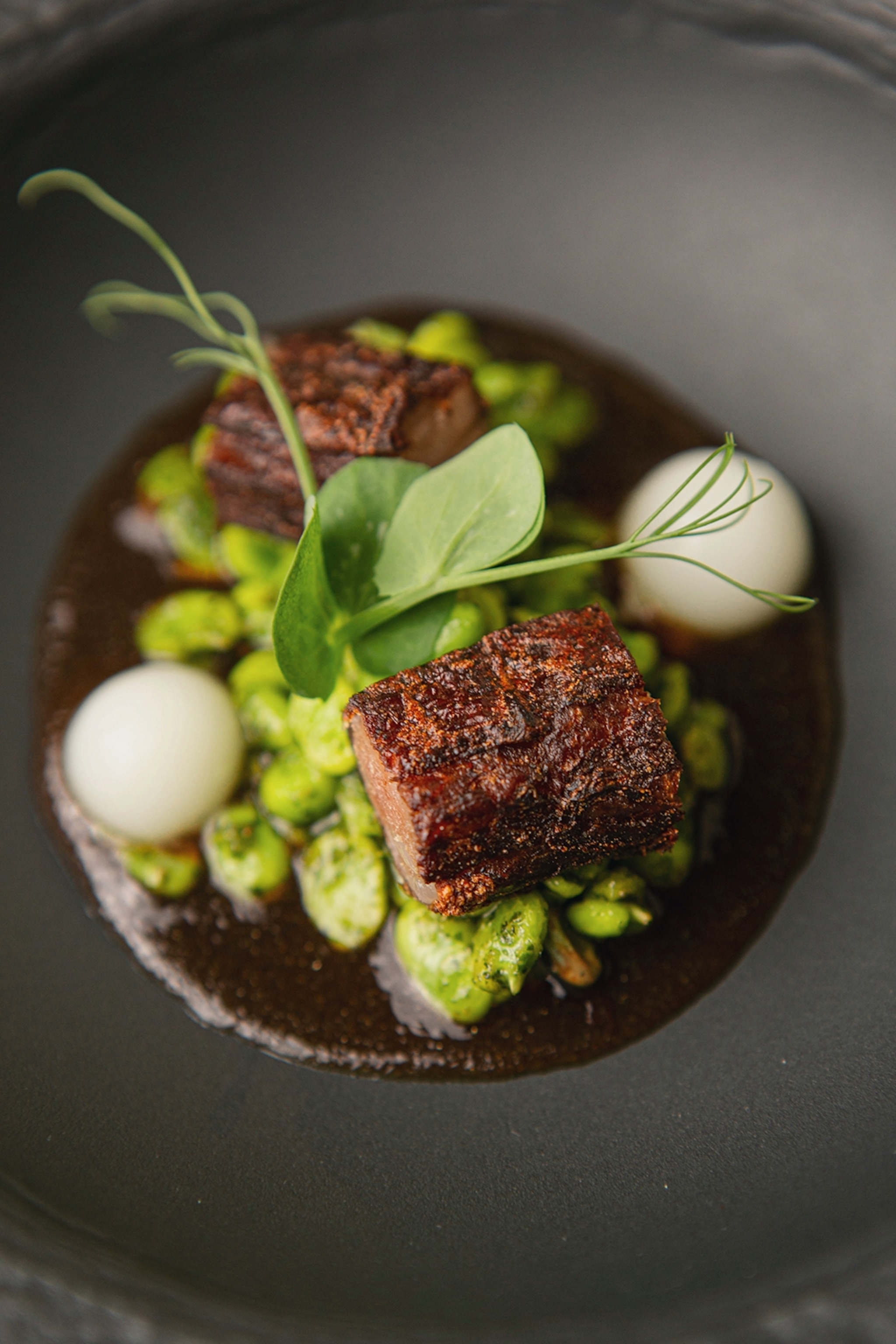
The winery: Barón de Ley
During a late-morning wine-tasting session in the Finca Los Almendros vineyard, a 740-acre expanse of fertile land home to six grape varieties, the sun makes a welcome appearance. It shines down on the vines, boosting the golden-yellow tones of the garnacha tinta grape leaves. And, as I scan the landscape, I can see the other varieties represented by different colours — green, gold, ochre and rust — each vine responding to the sun’s rays in its own way.
Located just outside the town of Mendavia, in Navarre province, the vineyard belongs to Barón de Ley, which has six vineyards dotted around the area. I’m hosted by Martha and Patricia and, together, we taste a pale, fresh garnacha rosé that’s buttery, mineral and floral at the same time. It works particularly well with a selection of salty charcuterie, straight from the company’s farm in Extremadura.
The winery is housed in a 16th-century former Benedictine monastery, and it’s here, in a dimly lit cellar, that I meet Pablo, the winemaker. He opens a 1985 vintage — a good, warm year for Rioja wines. It gives off a rich, heady aroma, but has lost its intensity of colour. “The reds die as whites and the whites die as reds,” he explains.
Next, we taste a 2021 vintage. Pablo blushes and grins. “He won’t say it because he’s shy,” Martha explains. “But this is one of the best white wines he’s made in his life”. It has hints of black liquorice and is fresh and fun. We taste, we spit, we taste again.
As we explore, I’m shown the sleek concrete vats and the vast, ageing concrete tanks. They contrast sharply with the rows upon rows of oak casks (31,000 in total) and, as we meander, I can smell the toasted oak and ageing alcohol. Back outside, the late-afternoon sun is still dancing upon the vines, twinkling on the grenache and tempranillo leaves.
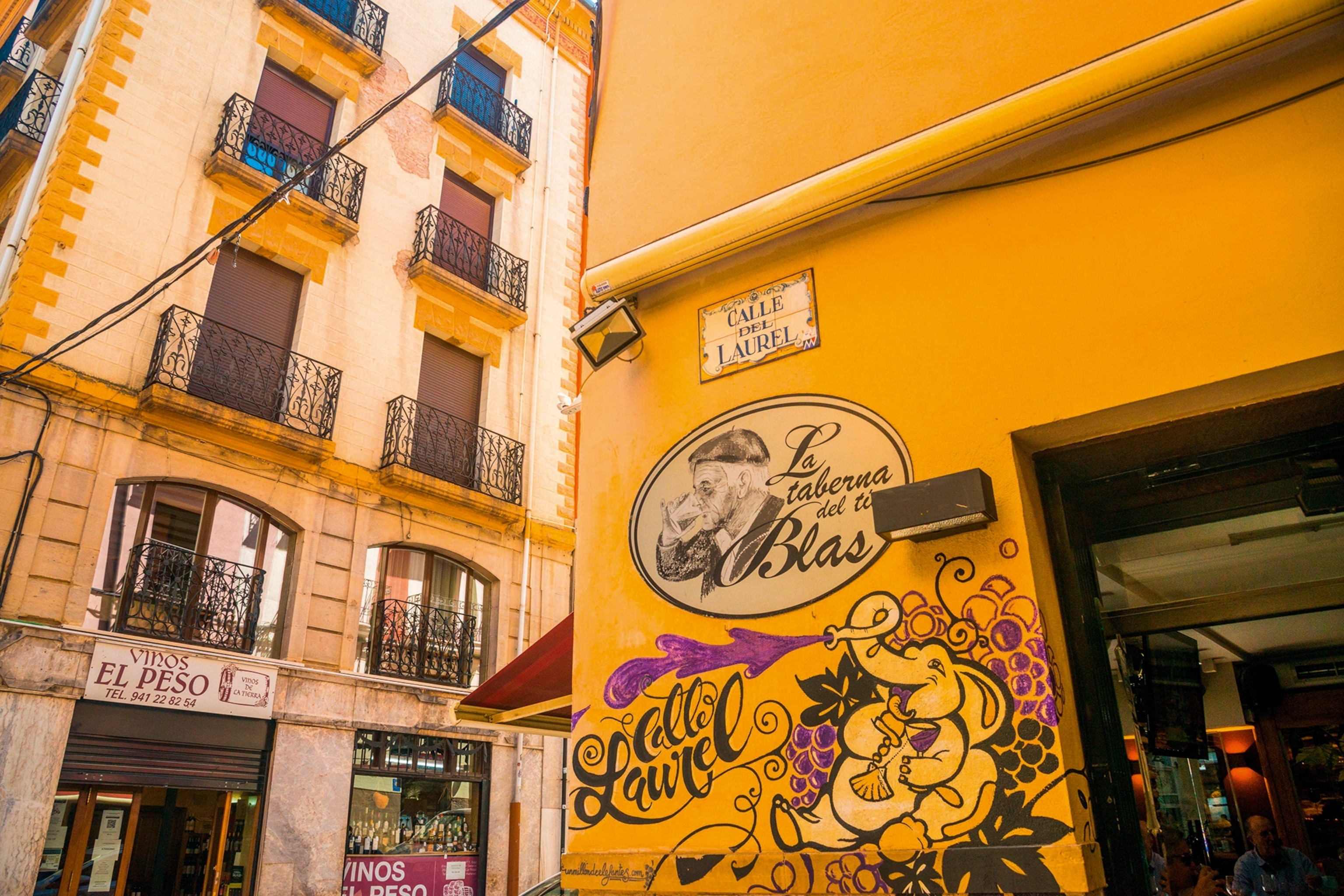
The tapas tour: Logroño
Café Bar Garcia has been in this spot on Calle San Juan for 57 years. Walk through the doors and you’ll find the same family behind the bar and the same dishes on the menu as when the place first opened. I’m sitting at the counter beside Marisol and Tirso, both 84, who have been coming here virtually every day for 20 years. They’re perched on stools, drinking beer, eating bocadillos de jamón (ham sandwiches) and watching WhatsApp videos of their grandson. I feel like I’m in their living room.
I’m being shown around Logroño by Martha, of Barón de Ley winery, who’s originally from here, and her friend Luis. Progress down Calle San Juan is slow, not because it’s particularly busy — it’s a Wednesday evening, and things tend to get livelier on Thursdays through Sundays — but because Martha and Luis know just about everyone. We’re soon joined by Sergio, too, who runs a bar on the corner.
The tapas scene in Logroño centres around two streets: Calle San Juan and Calle Laurel, where we’re headed next. The speciality here is pintxos, small bar snacks found across several northern Spanish regions, including the Basque Country and Rioja. Each bar is known for a single snack, and I’m given plenty of recommendations: head to Blanco y Negro for its matrimonio, a pintxo featuring green peppers and two types of anchovies, or to Bar El Perchas for its deep-fried pig’s ear. Then there’s the caparrones (local red bean stew) at La Méngula and the ultra-garlicky mushrooms, topped with a single prawn, at Bar Soriano.
At Bar Sebas, we order small sandwiches from the streetside window, dodging a cloud of cigar smoke as we collect our food. I’ve opted for a flaky baguette filled with deep-fried crispy liver and alegria riojana (a spicy Riojan red pepper paste), plus a glass of vino tinto. Then it’s on to Paganos for pork skewers. This bar has been running since 1960, succeeding with a very simple culinary offering: meat skewers grilled on an open coal fire.
Finally, we visit La Universidad Pulpería for octopus and smoked Galician ham and, while we eat, we’re joined by the owner of Bar Sebas, who’s finished up for the evening and is now conducting an after-work pintxos crawl of his own. We nod and say hello; it’s hard to go far here without bumping into someone.
(15 of the best Spanish food experiences.)
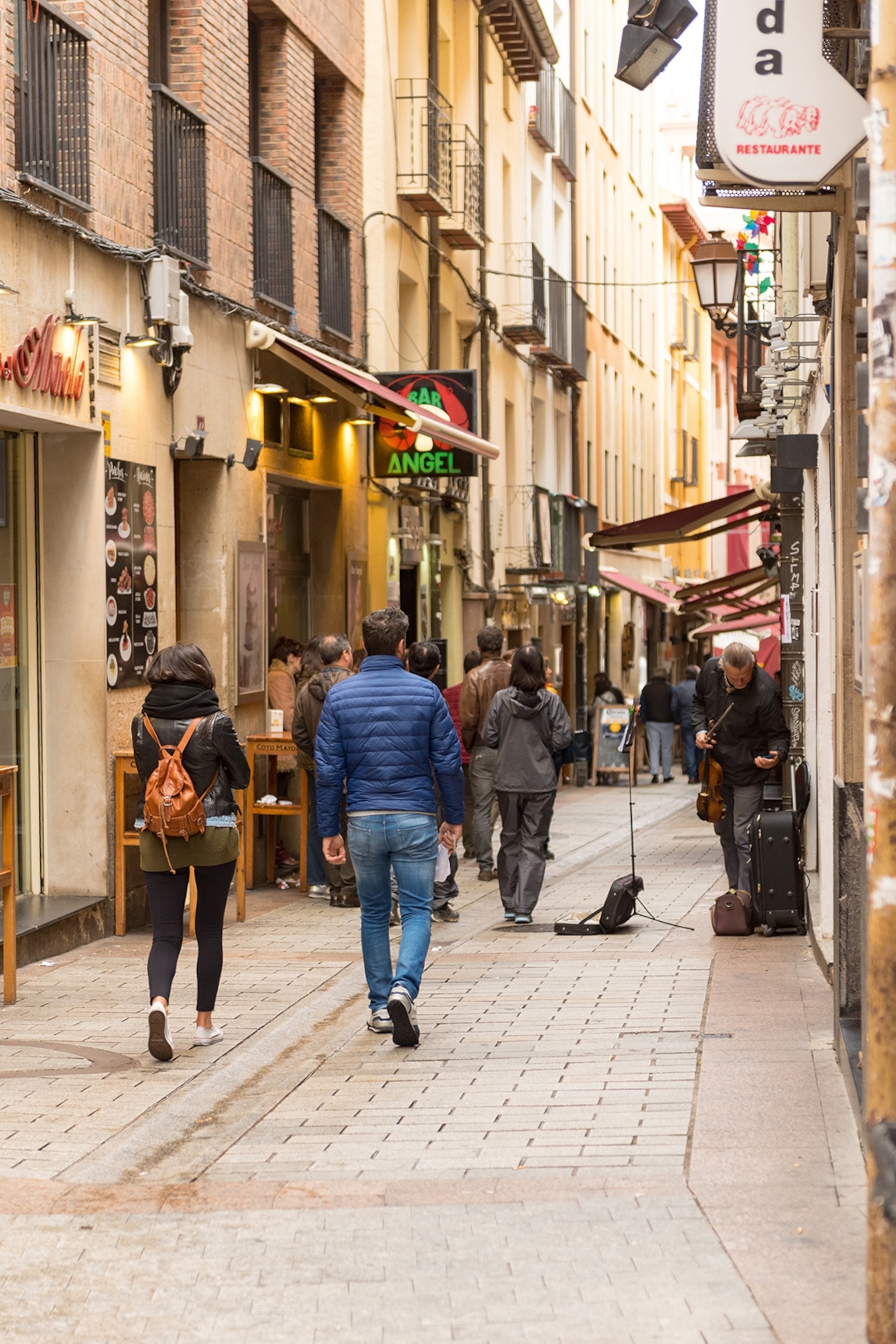
Fine dining: Ikaro
It might be better known for its pintxos, but Logroño has plenty of fine dining restaurants, too. Perhaps chief among them is Ikaro, which holds one Michelin star.
Run by culinary couple Iñaki Murúa and Carolina Sánchez, the restaurant offers an epic 11-course Discovery menu designed to showcase both their backgrounds — Iñaki is from nearby Álava, in the Basque Country, while Carolina is a celebrity in her homeland of Ecuador, where she’s a judge on the country’s version of MasterChef. The twin regional influences are evident immediately in my trio of starters, which includes ice cream made from local piquillo pepper and a fish broth made with neapia (a paste popular across the Amazon), served in a shell on a bed of corn.
Throughout the meal, I can’t take my eyes off the glass-fronted kitchen, where a host of chefs are carefully plating up a dazzling succession of dishes. I’m blown away by the punchiness of the Galician oyster paired with plantain ceviche; by the artful presentation of a leek stuffed with pureed partridge and served with burnt leek ash; by the simplicity and spice of an idiazabal cheese and espelette pepper bonbon.
At the end of proceedings, Iñaki comes out to talk to me, and conversation soon turns to Carolina, who’s away filming in Ecuador. He tells me she was drawn to Rioja due to its status as a wine region and her love of a tapas culture that just doesn’t exist in her homeland. As for the Michelin star, Iñaki says it’s helped them. “You suddenly go from nobody knowing you to everybody knowing you,” he says. His eyes are alight as he discusses Carolina and the dishes they create — it’s an energy I felt in their food.
Vueling, Iberia and British Airways fly from London to Bilbao, the nearest international airport, an hour-and-a-half’s drive from Logroño.
Riojatrek organises visits to Logroño (including cooking classes at Atelier Hermanas Loro), the wine country and beyond.
Rooms at the Mercure Carlton Rioja start at €70 (£62).
Ikaro’s piquillo pepper sorbet
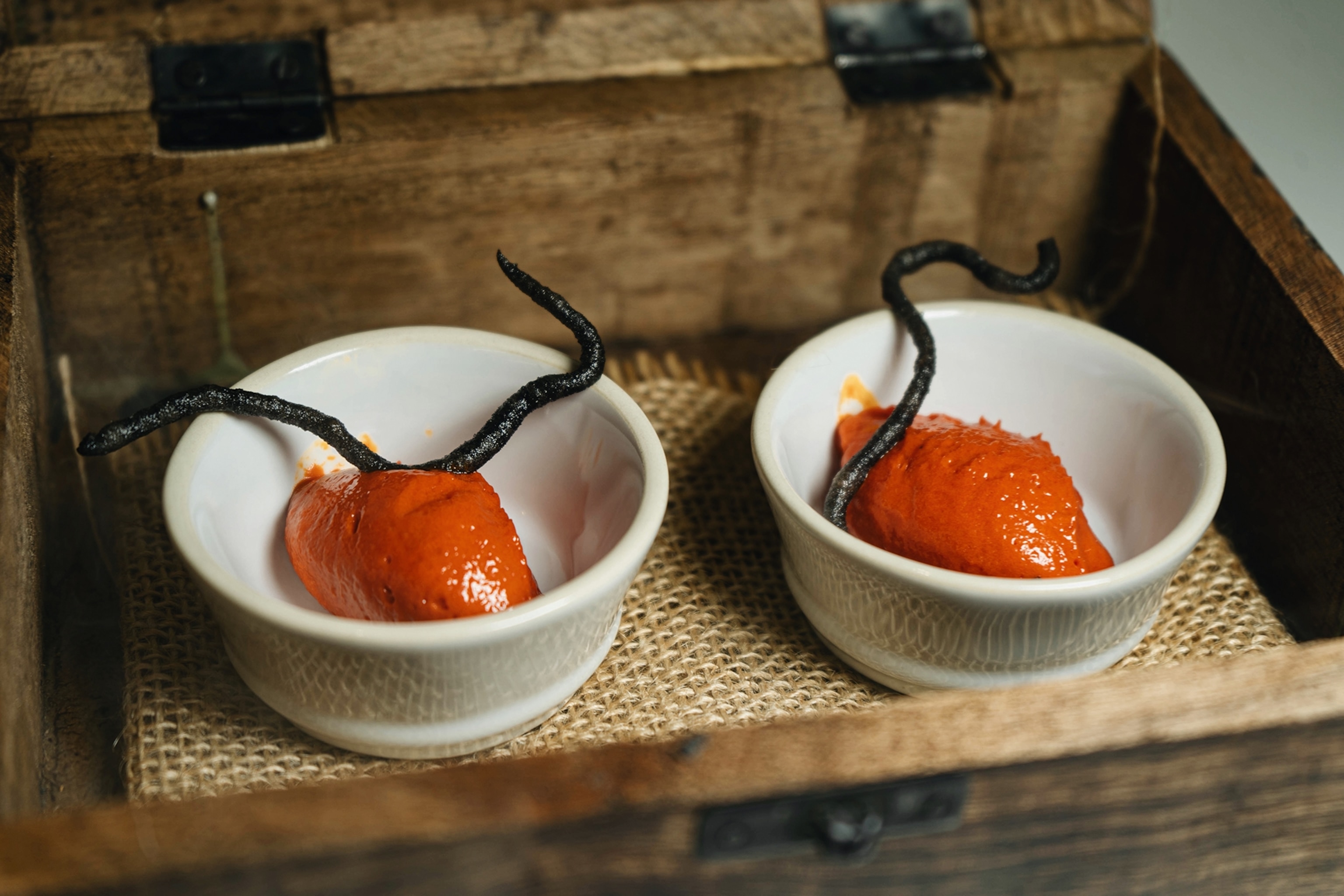
This sweet sorbet gets a gentle kick from piquillo peppers, which are confited in olive oil. To speed up the cooling process, submerge your mixing bowl in an ice bath and stir continuously until cool.
Serves: 10
Takes: 2 hrs 45 mins, plus cooling
Ingredients
500ml olive oil
1.5kg jar of piquillo peppers, drained
120g sugar
165g dextrose powder
7g salt
4g sorbet stabiliser
For the tempura vines
100g tempura flour
7g calamari ink
250ml sunflower oil
Method
1. Pour the olive oil into a large saucepan and set over a medium heat. Add the peppers, then reduce to a low heat and cook for 45-60 mins until wrinkled and starting to break down.
2. Drain the peppers, reserving the oil, and rinse them in cold water. Tip the peppers into a blender and blitz to a smooth puree.
3. Return the puree to the pan along with 70ml of the reserved piquillo oil (save the rest to cook with in future). Set the heat to medium and use a thermometer to check the temperature — when it reaches 40C, mix through the sugar, dextrose, salt and sorbet stabiliser and continue heating until it reaches 85C, then remove from the heat.
4. Use a stick blender to blitz the mixture until completely smooth. Set aside to cool completely, then transfer to an ice cream machine to freeze for 45-60 mins, depending on your machine.
5. Meanwhile, make your decorative tempura vines. Mix the flour and calamari ink in a bowl with 100ml water. Transfer to a piping bag with a small nozzle.
6. Add the sunflower oil to a deep saucepan and set over a medium heat. When the oil is hot, pipe the batter into the pan in decorative vine shapes. Remove them from the oil as soon as they’re crispy and have stopped bubbling, and leave to drain on kitchen paper.
7. Decorate the sorbet with the tempura vines and serve.
Local favourites
Caparrón
The caparrón is a variety of red kidney bean grown around the Rioja region. It comes in maroon and white varieties and is most commonly used in caparrones, a traditional Spanish stew that also features pork cuts such as chorizo, pig’s ear and morcilla sausage. Try it at La Méngula in Logroño.
Piquillo peppers
Drive through the villages of the Rioja province between September and December and you’ll be struck by the scent of roasting piquillo peppers. Sweet to taste and lacking heat, they’re often stuffed with meat and cheese as tapas. Piquillo peppers grown in the village of Lodosa, in the Navarre region, have DOP status.
Sign up to our newsletter and follow us on social media:
Facebook | Instagram | Twitter
